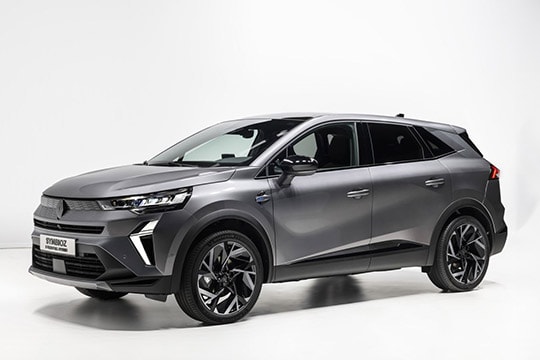RENAULT Symbioz Models/Series Timeline, Specifications & Photos
First production year: 2024
Engines: Hybrid gasoline
Body style: SUV (Sports Utility Vehicle)
Renault expanded its crossover range of vehicles in 2024 when it introduced the Symbioz, which slotted between the Captur and the Austral, confirming the carmaker's aggressive growth program.
Almost six decades before the launch of the Symbioz, the French automaker introduced the Renault 16, which won the "1966 European Car of The Year" award. That was the first successful hatchback in automotive history. It defined Renault's concept of the "Voiture a vivre" (a car to live), meaning that the vehicle was versatile and could be used for daily routine and weekend escapes. Fast forward to 1984, and the automaker created the Espace lineup, which became the most successful European MPV. Not only did it provide ample room for five people, but it also provided enough storage area for luggage. With Symbioz, Renault tried to merge those two ideas into one product adapted for the twenty-first century. To do that, it used the CMF-B platform shared with the Captur and the Austral and then spiced it up with some intriguing design elements and an elegant cabin.
The Symbioz followed the design language introduced by the Scenic E-Tech and the Captur. Renault created a horizontally split front fascia, where the badge took center stage above the lower air intake. The upper panel was decorated with design elements that looked to expand the automaker's rhomboidal badge. A set of slim LED headlights with an angular design created the image of an important vehicle. Lower on the bumper, Renault placed a set of lightning-like LED daytime running lights in the side scoops that flanked the center air intake.
From its profile, the Symbioz boasted an SUV stance, with black trims around the wheel arches and side sills that created the image of a higher ground clearance. The sculptured doors with ascending lines added a touch of sporty look to the vehicle. At the back, the raked forward tailgate sported a roof spoiler at the top and included part of the triangular taillights extended from the quarter panels. On the lower side of the bumper, a silver trim mimicked a shield and was flanked by the reversing and fog lamps.
Inside, the automaker placed a smooth-looking dashboard with elegant and simple lines. Atop the center stack, Renault installed a 10.4-inch touchscreen placed atop the center stack. It was based on the Android Automotive 12 and provided built-in Google Maps, and was Android Auto and Apple CarPlay compatible. A second 10.3-inch screen found its way into the instrument cluster that fronted the driver. Furthermore, the system allowed FOTA (firmware over the air) updates, so customers didn't have to worry about anything. At the front, the bucket seats were separated by a center console, which housed the gear selector and a storage area. For those seated in the back, Renault installed a sliding and split-folding (40/20/40) bench seat.
Under its skin, the Symbioz offered a hybrid drivetrain where a naturally aspirated 1.6-liter gasoline engine charged the car's main electric motor, while a second motor was mainly used as a starter-generator
